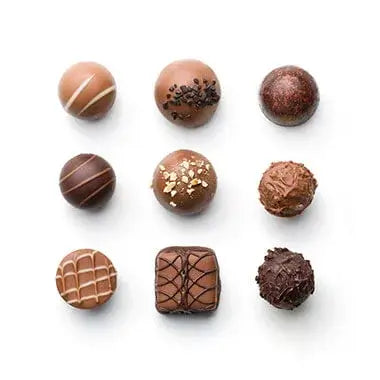In this blog post, we will explore the myths and differences between kosher salt and table salt, two of the most common types of salt used in cooking. We will explain what kosher salt and table salt are, how they are made, and how they affect your food.
We will also debunk some of the misconceptions and misunderstandings about these types of salt and give you some tips on how to use them properly in your cooking.
Salt is one of the most essential and versatile ingredients in cooking. It enhances the flavor, texture, and appearance of food, and also plays a role in food preservation, fermentation, and baking.
However, not all salt is created equal. There are many types of salt available in the market, each with its own characteristics, benefits, and drawbacks.
Two of the most common types of salt are kosher salt and table salt. But what are the differences between them, and how do they affect your food?
In this blog post, we will debunk some of the myths and misconceptions about kosher salt and table salt, and help you understand how to use them properly in your cooking.
What is Kosher Salt?
Kosher salt is a type of salt with large, coarse grains. It is mined from salt deposits and usually does not contain any additives or iodine. It is called kosher salt because it is used in the koshering process, which involves removing the blood from meat or poultry before cooking.
Kosher salt has a flaky and irregular structure that makes it easy to sprinkle over food and draw out moisture from meat. Kosher salt is less dense than table salt, so it weighs less by volume and has a milder flavor.
What is Table Salt?
Table salt is a type of salt with small, fine grains. It is also mined from salt deposits, but it is processed to remove impurities and add anti-caking agents to prevent clumping. Most table salt is also iodized, which means that it has iodine added to it to prevent iodine deficiency.
Table salt has a cubic and uniform structure that makes it more compact and saltier than kosher salt. Table salt is more suitable for baking than kosher salt, as it dissolves quickly and measures more accurately.
What are the Myths and Misconceptions about Kosher Salt and Table Salt?
There are many myths and misconceptions about kosher salt and table salt that can confuse consumers and affect their cooking results. Here are some of the most common ones:
• Myth: Kosher salt is healthier than table salt because it has less sodium.
• Fact: Kosher salt and table salt have the same chemical composition: sodium chloride. The only difference is the size and shape of the grains. Kosher salt may seem to have less sodium because it weighs less by volume than table salt, but if you measure them by weight, they have the same amount of sodium. The best way to reduce your sodium intake is to use less salt in general, regardless of the type.
• Myth: Kosher salt is more natural than table salt because it does not have any additives or iodine.
• Fact: Kosher salt and table salt are both natural products that are mined from salt deposits. The additives in table salt are not harmful or artificial; they are simply used to prevent clumping and provide iodine, which is an essential nutrient for thyroid health. Iodine deficiency can cause goiter, cretinism, and mental retardation. However, most people get enough iodine from other sources, such as seafood, dairy products, eggs, and bread. If you prefer to use non-iodized salt, you can find it in most grocery stores.
• Myth: Kosher salt and table salt can be used interchangeably in recipes without affecting the outcome.
• Fact: Kosher salt and table salt have different grain sizes and densities, which means that they measure differently by volume. If you use kosher salt instead of table salt in a recipe that calls for a specific amount of salt (such as a teaspoon or a tablespoon), you will end up using less salt than intended, which can affect the flavor, texture, and chemistry of your food.
Conversely, if you use table salt instead of kosher salt in a recipe that calls for a pinch or a sprinkle of salt (such as over meat or vegetables), you will end up using more salt than intended, which can make your food too salty. The best way to avoid this problem is to measure your salt by weight rather than by volume, or to adjust your measurements according to the type of salt you are using.
How to Use It Properly in Your Cooking?
Kosher salt and table salt have different properties that make them more suitable for certain purposes in cooking. Here are some tips on how to use them properly:
- Use kosher salt for seasoning dishes during or after cooking. Kosher salt has a larger flake size that makes it easy to pick up with your fingers and sprinkle over food. It also dissolves slowly on the surface of food, creating a burst of flavor without making it too salty.
- Koshersalt is also ideal for curing or smoking meat, pickling vegetables, or brining poultry or seafood, as it draws out moisture and enhances the flavor of food.
- Use table salt for baking or for dishes that require a precise amount of salt. Table salt has a smaller grain size that makes it more accurate and consistent for measuring. It also dissolves quickly and evenly in batters, doughs, or liquids, creating a uniform flavor and texture. Table salt is also good for seasoning dishes during cooking, as it penetrates deeper into food than kosher salt.
- Use sea salt or Himalayan salt for finishing dishes or for adding a crunchy texture and a complex flavor. Sea salt and Himalayan salt are types of salt that are made by evaporating seawater or mined from ancient salt deposits, respectively.
They have larger and uneven grains than kosher or table salt, and they contain trace minerals that give them a distinctive color and taste. Sea salt and Himalayan salt are great for adding a touch of elegance and sophistication to your dishes, as they enhance the flavor and appearance of food.
Conclusion
Kosher salt and table salt are two of the most common types of salt used in cooking. They have different grain sizes, densities, flavors, and uses. Kosher salt is larger, flakier, milder, and more suitable for seasoning dishes during or after cooking, curing or smoking meat, pickling vegetables, or brining poultry or seafood. Table salt is smaller, finer, saltier, and more suitable for baking or for dishes that require a precise amount of salt.
Both types of salt have the same chemical composition and sodium content, but table salt usually contains additives and iodine. Kosher salt and table salt cannot be used interchangeably in recipes without affecting the outcome.
The best way to use them properly is to measure them by weight rather than by volume, or to adjust your measurements according to the type of salt you are using. You can also use other types of salt, such as sea salt or Himalayan salt, for finishing dishes or for adding a crunchy texture and a complex flavor.































































